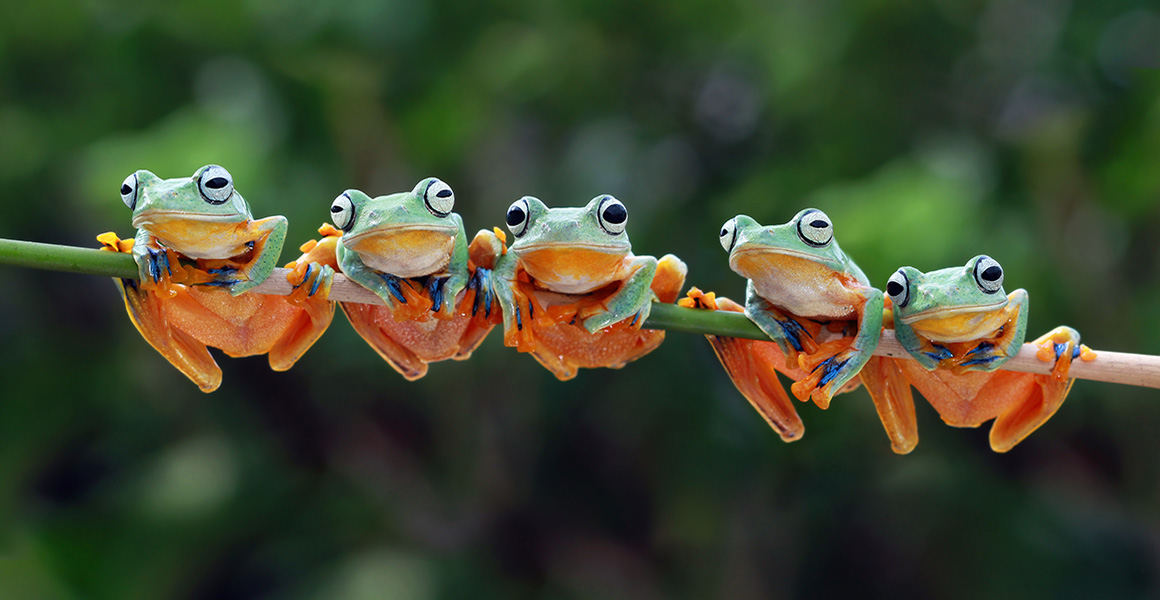Not feeding as a tadpole speeds up frog evolution - The Natural History Museum

The diversity and double life of frogs
There are more than 7,300 species of frog found all over the world and they show a remarkable diversity in life history and ecology. Frogs can live in water, in trees, under the ground and on top of the ground.
There are two distinctive stages in a frog's life. The first is its larval form, which can look like eggs or tadpoles, before they change into their adult form through a process called metamorphosis.
In different species of frog, the tadpole will either stay in their eggs for the entire larval stage and go through metamorphosis within the egg, or the larvae can hatch and feed themselves as free-swimming tadpoles.
The team of researchers thought that because frogs have needed to adapt to specific environments to survive, the behaviour of their larvae might have impacted the evolution of their skulls. This is because feeding as an aquatic tadpole is quite different from feeding as an adult on land and the team wondered how this might impact how the adult's skull would develop.
The loss of feeding in tadpoles consistently resulted in a burst of faster evolution and a wider variety of skull shapes than those frogs that hatch and feed themselves as tadpoles. Precisely why this is the case is still not fully understood.
This information could be important for understanding which frogs will be most affected by climate change, because being able to evolve quickly is a going to be very helpful when environments are changing at an unprecedently fast pace.
In the study, the team collected micro-CT scans of lots of different kinds of frogs with different lifestyles as adults and as tadpoles.
Anjali says, 'When selecting the species of frogs for the study, we wanted to include a full range of diversity. We took the evolutionary tree of frogs and picked a representative from every family and subfamily, and we also included diversity of ecology and different ways of developing when choosing species.'
In total, they looked at the skulls of 173 different frog species and used 3D methods to capture the shape of the skull with a high level of detail.
The study also found that the way the frog skull changes with size, getting relatively wider in big frogs, is similar to patterns in salamanders and caecilians (legless amphibians). This suggests a new amphibian pattern of skull growth. Similar patterns have been identified in mammals, where the skull gets longer (rather than wider) as it gets bigger, but a similar pattern has never been identified in another vertebrate class.



Comments
Post a Comment